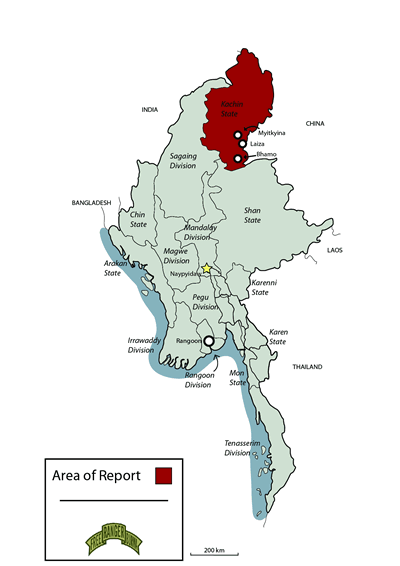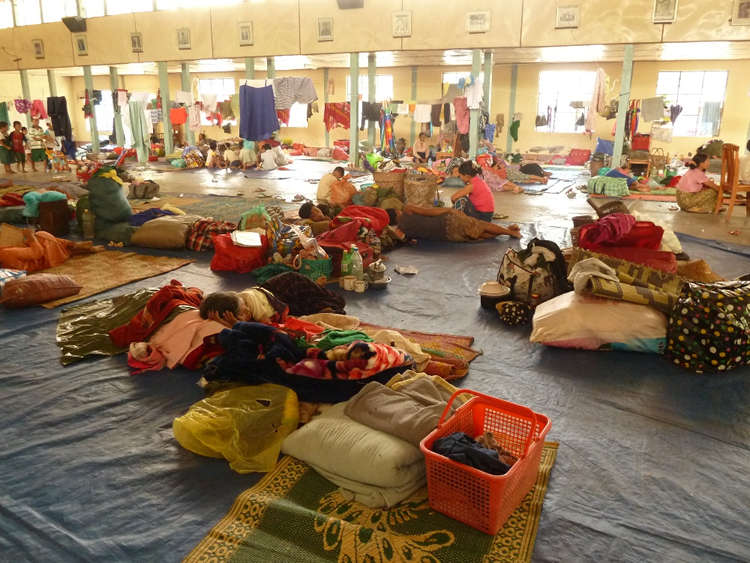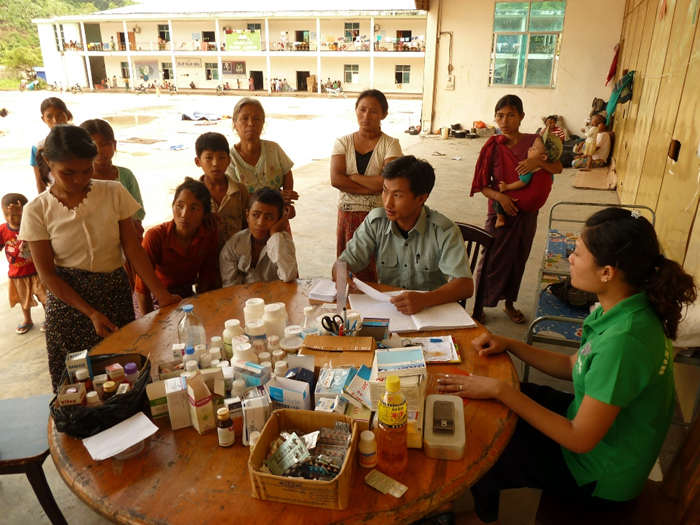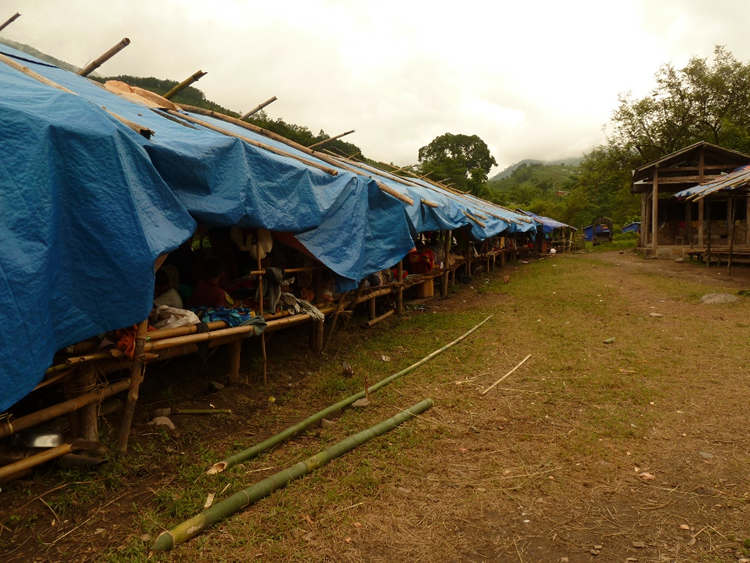|
 |
| Map showing area of report |
On 9 June 2011 fighting started between the Kachin Independence Army (KIA) and the Burma Army. The fighting was started by a dispute between the two armies over control of the area surrounding the Chinese-run Taping hydropower projects. This ended the 17-year ceasefire between the two armies. For more information, go to: Fighting in Kachin State ends 17-year cease-fire (https://www.freeburmarangers.org/Reports/2011/20110704.html )
At least 15,668 people in Kachin State have fled their homes for safety along the China-Burma border, according to the Kachin Independence Organization (KIO). Most of these people fled because of KIO warnings that there may be fighting in the area. As of now, the Burma Army and KIO have only engaged in small attacks between camps while cease-fire negotiations continue. If the political talks fail, there may likely be more fighting which would cause more people to abandon their homes to seek safety on the border. The Burma Army has sent a total of 68 Battalions to all of Kachin State.
 |
| IDPs living in Laiza city hall |
 |
| Kachin doctors care for IDPs |
The KIO reported a breakdown of internally displaced persons (IDPs) as follows: Western Division, 2328 IDPs; Eastern Division, 6538; Dum Bung, 380 (very near fighting area); Maga Yang, 641; and in the KIO’s capital Laiza, 5781 where there are still more people trickling in. There are four IDP locations in the Laiza area: the Laiza Cultural Center, 2013 IDPs; City Hall, 868 IDPs; an unused factory, 1884 IDPs; and an unused portion of the local market with an unknown number of IDPs. According to the KIO, it is providing most of the aid to these people; giving US$500 per location per day. However there are more displaced people that have crossed the border into China.
 |
| Temporary IDP location |
Most of the people staying in IDP locations are women and children. Most of the men have gone back to their farms despite the dangers, because they won’t have food for the next year if they don’t continue farming. The displaced people are given rice and eat it with whatever they can find, usually salt and chilis. The KIO provides meat two times a week. There are small clinics at each camp, and the main clinic in Laiza can keep the clinics supplied with medicine. At each clinic there is one doctor and two or three nurses. The most common sicknesses are diarrhea and cough, and most of the patients are children. One child recently died from diarrhea. A major concern is the lack of safe drinking water, as currently people are drinking rain water and water from a nearby creek. The IDP children have been attending the local school, but they are split into morning and afternoon groups because there is not enough room. Even with these issues, conditions in the IDP sites are relatively stable.
Thank you and God Bless you,
Kachin FBR Teams
